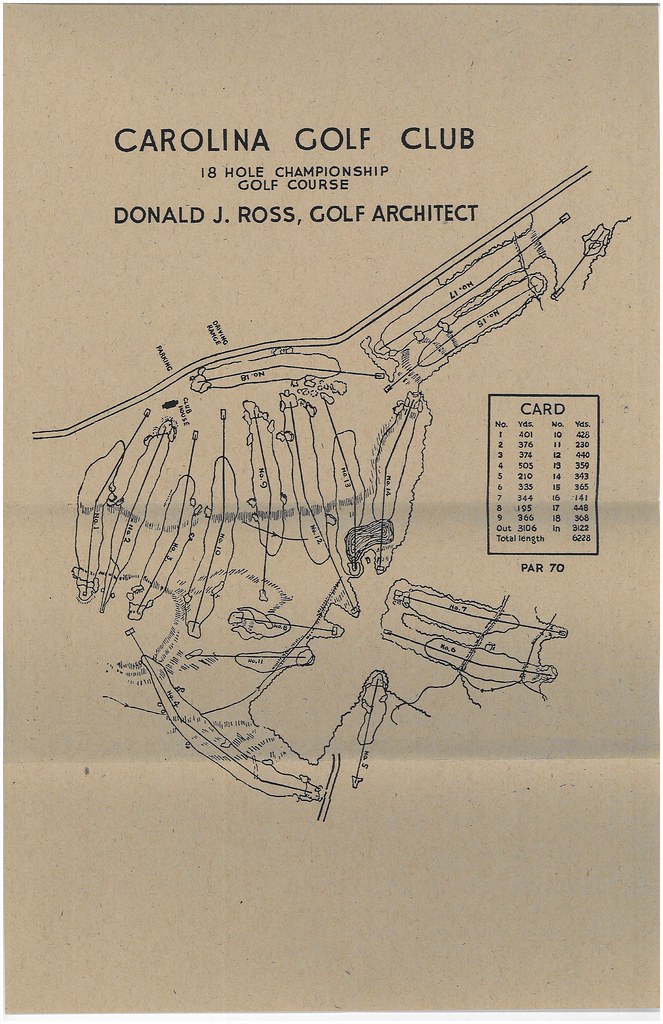At first glance from high overhead one might think negatively of Carolina Golf Club as it features 8 parallel par 4's situated side-by-side-by-side. And although each plays across a natural trough running through the property I've yet to encounter anyone that ever realized, or expressed negatively they were playing a course with 8 parallel par 4's next to one another.
The first drawing below shows the original routing/sequence as designed by Donald Ross. You notice holes 1,2, & 3 start you back and forth but then you don't return to that portion of the property until holes 9 & 10. After playing 11 you return back and complete the last three holes of the conglomerate 12,13, & 14.
The club privatized in 1958 and a new clubhouse was constructed on a high point between the original 5th green and 6th tee in the early 1960's. This necessitated changing the sequence of when each hole was played. The original hole numbers of 1,2,3,9,10,12,13,& 14 are now 7,6,5,4,15,17,18,& 10. In 2005-2006 Kris Spence constructed two new holes on neighboring land acquired by the club and the two parallel par 4's (Original 6 & 7) were reshaped and rebuilt into our practice range thus preserving the current sequence.
To answer the question posed in the thread, I say great. But of course I'm biased.


